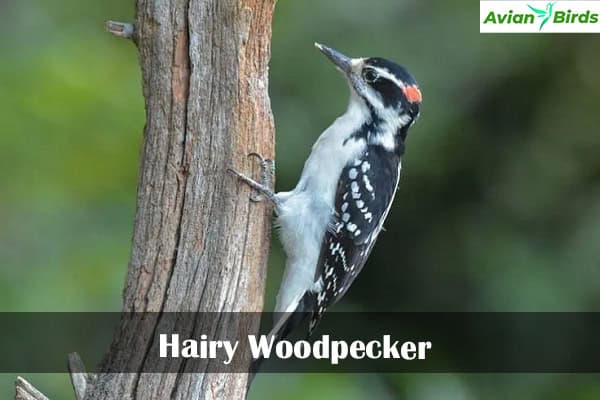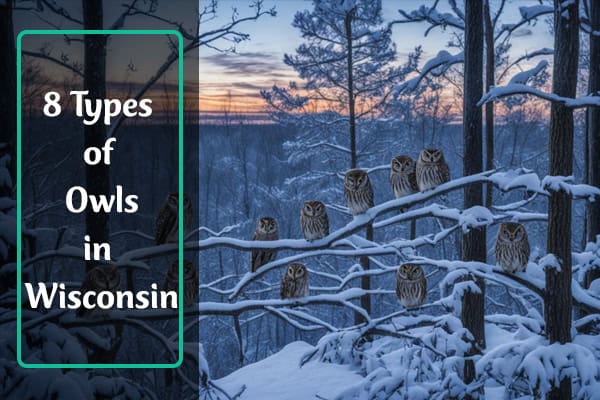7 Types of Brown Birds With Red Heads (With photos)
Did you know over 800 species of birds live in the United States? Many of them have bright colors and unique traits. Brown birds with red heads are especially striking and interesting.
We’ll look at seven types of these birds, from the common House Finch to the beautiful Summer Tanager. Also, These birds are found all over North America. They’re not just pretty; they’re also important to our ecosystems.
Let’s explore these amazing birds together. We’ll learn about identifying them, where they live, and what makes them stand out. You’ll get to know more about woodpeckers, tanagers, and finches. And you’ll see the beauty of nature up close.
What Are Brown Birds With Red Heads?
Brown birds with red heads are a fascinating part of our bird world. They have rich brown feathers and bright red on their heads. These birds are found in different places and have special traits that make them stand out.
These birds are very adaptable, living in many kinds of places. They eat seeds, fruits, and insects, showing how flexible they are. Learning about their classification and roles in nature helps us appreciate their behavior and where they live.
We will look at different species in the next sections. Each one has its own special features that add to our knowledge of North America’s bird diversity.
Brown Birds With Red Heads: A Detailed Overview
We’re exploring brown birds with red heads, finding a world full of beauty and complexity. These birds show us the wonders of nature. They have unique traits and behaviors that help them live in their environments.
Species like the House Finch and Red-Headed Woodpecker are great examples of adaptation. They have different ways of finding food, which helps their ecosystems and increases biodiversity. Learning about these birds helps us value wildlife more.
Below is a table that summarizes the key traits and habits of seven brown birds with red heads. It compares their unique features, helping us learn more about these interesting birds.
| Bird Species | Coloration | Habitat | Feeding Habits |
|---|---|---|---|
| House Finch | Brown body, red head | Urban areas, gardens | Seeds, fruits |
| Downy Woodpecker | Brownish-white, red cap | Woodlands | Insects, seeds |
| Red-bellied Woodpecker | Brown, red head | Deciduous forests | Fruits, insects |
| Hairy Woodpecker | Brown mottled, red patch | Forested areas | Wood-boring insects |
| Summer Tanager | Brown body, red head | Open woodlands | Insects, fruits |
| Red-Headed Woodpecker | Black, white, vibrant red head | Woodlands, savannas | Insects, fruits |
| Northern Cardinal | Brownish body, red on head | Backyards, parks | Seeds, berries |
1. House Finch
- Name: Haemorhous mexicanus
- Size: 5–6 in
- Diet: Seeds, fruits, insects
- Lifespan: Up to 11 years
- Wingspan: 7.9–9.8 in
- Weight: 0.6–1 oz
The House Finch is a bird we often see around. Its bright colors and social nature make it stand out. Learning about this bird helps us appreciate it more.

Characteristics and Behavior
The male House Finch has a bright red head and breast. Females look more brown and streaked. They are friendly and often live in groups.
They are good at living near people and visit bird feeders and gardens. In spring, they make loud sounds to find a mate and defend their territory.
Habitat and Range
The House Finch lives in many places. It started in the western U.S. but now lives all over North America. Also, They like places with lots of food.
They eat seeds, fruits, and flowers. This helps them live in different areas.
| Characteristic | Detail |
|---|---|
| Male Plumage | Bright red head and breast |
| Female Plumage | Brown and streaked |
| Behavior | Social and friendly, often seen in flocks |
| Diet | Seeds, fruits, and flowers |
| Range | Widespread across North America |
2. Downy Woodpecker
- Scientific Name: Picoides pubescens
- Size: 14–18 cm (5.5–7.1 in)
- Weight: 24–33 g (0.85–1.16 oz)
- Lifespan: 1–5 years (up to 10 years in the wild)
- Diet: Insects, larvae, and seeds; often forages on tree bark.
The Downy Woodpecker is a small bird that catches the eye of birdwatchers and nature lovers. It has a unique black and white look and a size that makes it stand out. You can spot the males by their small red crowns. They live in woodlands, parks, and even near homes, making them easy to see.

Identification Tips
To tell a Downy Woodpecker apart, look for these key features:
- Size: It’s one of the smallest woodpeckers in North America.
- Coloration: Males have a red patch on their heads, while both sexes have black and white feathers.
- Habitat: They live in forests, parks, and even in suburban areas.
- Behavior: They make unique drumming and pecking sounds while searching for food.
Diet and Feeding Habits
The Downy Woodpecker eats a wide variety of foods, helping it survive in different places. Here’s what they like to eat:
- Insects: They catch beetles, ants, and larvae from tree bark.
- Seeds: They take seeds from flowers and other plants.
- Berries: They eat fruits, especially in the summer.
Watching how they eat shows us their important role in nature. They change their diet based on what’s available, showing how adaptable they are.
| Feature | Details |
|---|---|
| Size | About 6.5 to 7.1 inches long |
| Weight | Approximately 0.7 to 1.0 ounces |
| Coloration | Black and white with a red patch for males |
| Typical Diet | Insects, seeds, berries |
| Habitat | Forests, parks, residential areas |
3. Red-bellied Woodpecker
- Scientific Name: Melanerpes carolinus
- Size: 23–26 cm (9–10.2 in)
- Weight: 70–100 g (2.5–3.5 oz)
- Lifespan: 4–10 years
- Diet: Insects, fruits, nuts, and seeds; forages on trees and in shrubs.
The Red-bellied Woodpecker (Melanerpes carolinus) is a standout in the bird world. It has a medium size and is known for its bright red cap and nape. The belly often shows a reddish color, but it can be hard to see. Its back is black and white, making it look striking, and its underside is gray, helping it blend in.

This woodpecker lives in many types of woodlands across the eastern United States. They are flexible and often visit suburban areas for food. They love mature forests, mixed woodlands, and parks, making them easy to spot for bird lovers.
The Red-bellied Woodpecker eats a wide variety of foods. Their diet mainly includes:
- Insects like beetles and ants
- Nuts, especially acorns
- Fruits, including berries
Watching these woodpeckers shows how important they are to the ecosystem. They help control insect numbers and spread seeds as they forage. This bird is truly amazing, showing how it can thrive and adapt in its environment!
4. Hairy Woodpecker
- Scientific Name: Picoides villosus
- Size: 20–23 cm (7.9–9.1 in)
- Weight: 70–90 g (2.5–3.2 oz)
- Lifespan: 1–5 years (up to 15 years in the wild)
- Diet: Insects, larvae, and seeds; often forages on tree bark.
The Hairy Woodpecker Brown Birds With Red Heads is often confused with the Downy Woodpecker. But, they have many differences. These differences help us see their unique traits and how they live in the wild.

Differences from Downy Woodpecker
The Hairy Woodpecker is bigger than the Downy Woodpecker. It also has a longer bill, which helps it find food. Its black and white feathers look similar, but it’s bigger, making it easier to tell apart in the woods.
The male Hairy Woodpecker has a red patch on its head. This red patch helps us tell it from the Downy Woodpecker.
Behavior and Nesting Habits
The Hairy Woodpecker makes loud drumming sounds in mature forests. They like to eat insects from the trunks of big trees. They build their nests in tree holes, showing how they adapt to their home.
5. Summer Tanager
- Scientific Name: Piranga rubra
- Size: 16–18 cm (6.3–7.1 in)
- Weight: 20–30 g (0.7–1.1 oz)
- Lifespan: 3–5 years
- Diet: Insects, fruits, and berries; often forages in trees and shrubs.
The Summer Tanager (Piranga rubra) is a bird that catches the eye with its bright colors. Males shine in red, while females wear a yellow to olive-green look. They live in woodlands and forests in the eastern and southern U.S. during summer, singing sweet melodies for us.

In summer, these birds eat mostly insects like bees and wasps. This shows how they fit into their environment and help keep it healthy. They migrate to Central and South America for winter, leaving us to miss their songs.
The Summer Tanager shows us the beauty of nature. Their bright colors and songs lift our spirits. They are adaptable and important to our ecosystems, making them a treasure in our world.
6. Red-Headed Woodpecker
- Scientific Name: Melanerpes erythrocephalus
- Size: 22–28 cm (8.7–11 in)
- Weight: 70–100 g (2.5–3.5 oz)
- Lifespan: 2–10 years
- Diet: Insects, fruits, nuts, and seeds; often forages on trees and in open areas.
The Red-Headed Woodpecker is known for its bright look and special living spots. It has a red head, white belly, and black wings. You can see it in open woods and savannas. Knowing where it lives helps us value its home.

Habitat Preference
This bird likes different places, including:
- Open woodlands
- Savannas
- Orchards
It’s famous for its loud calls. It also stores food in trees for later. But, its numbers are stable, and losing its home is a big worry. That’s why saving its living spaces is very important.
| Characteristic | Detail |
|---|---|
| Coloration | Bright red head, white underparts, black wings |
| Size | Medium-sized woodpecker |
| Call | Chattering calls |
| Habitat | Open woodlands, savannas, orchards |
| Behavior | Caching food in tree crevices |
7. Northern Cardinal
- Name: Cardinalis cardinalis
- Size: 8.3–9.3 in
- Diet: Seeds, fruits, insects
- Lifespan: Up to 15 years
- Wingspan: 9.8–12.2 in
- Weight: 1.5–1.7 oz
The Northern Cardinal is a bird that captures our hearts with its bright look and fun behavior. It’s found all over North America. The males have bright red feathers, while females have more subtle tan colors. Their looks and sounds show how lively they are and how important they are to our world.

Distinctive Features and Calls
Males of the Northern Cardinal stand out with their bright red feathers and a special crest. Females are less colorful but have beautiful shades of brown and gray. They often have reddish tinges on their wings and tail. These colors help them find a mate.
The Northern Cardinal’s songs are a joy to hear. They sing to mark their territory and to find a mate. These songs make our gardens feel more alive and beautiful.
Breeding and Nesting
In spring and summer, Northern Cardinals work hard to raise their young. They build nests in dense shrubs or trees. Both parents take care of their babies, keeping them safe and fed. This teamwork shows how strong their bond is and teaches us about bird behavior.
Seeing Northern Cardinals take care of their babies makes us appreciate them more. Their dedication to breeding and raising their young is a special part of birdwatching that we can enjoy all year.
| Feature | Male Cardinal | Female Cardinal |
|---|---|---|
| Color | Bright red | Brownish-gray with red accents |
| Crest | Prominent | Less prominent |
| Vocalizations | Melodious, varied | Similar, with slight differences |
| Breeding Season | Spring to Summer | Spring to Summer |
Common Myths and Facts About Red-Headed Birds
Many myths surround red-headed birds, leading to wrong ideas about their lives and where they live. One myth says these birds live only in certain places and are very rare. But, many species like the Northern Cardinal and the Red-bellied Woodpecker live in different places and are common.
Some think red-headed birds eat only insects. But, they actually eat a variety of foods including fruits, seeds, and nuts. Knowing this helps us see how varied their diets are.
It’s also thought that red-headed birds are always mean. While some can be protective of their territory, many are friendly and like to eat together. Learning the truth about them shows how important they are to our environment.
- Myth: Red-headed birds are rare.
- Fact: Many are widely distributed.
- Myth: They only eat insects.
- Fact: Their diet includes various foods.
- Myth: They are naturally aggressive.
- Fact: Many species are social and cooperative.
Read More 🐦Related Articles:
| Black Birds With Orange Wings |
| Black Birds With White Bellies |
| Small Birds with Red Heads |
| Birds Similar to Peacocks |
| Small Birds with Long Legs |
Wrapping Up…
We’ve looked at seven types of brown birds with red heads and seen their beauty and importance. Each bird, like the House Finch and the Red-headed Woodpecker, plays a special role in its home. They make nature more colorful and interesting for us.
Birdwatching lets us get closer to these amazing birds and learn about their lives. By watching these brown birds with red heads, we feel more connected to nature. This helps us value the different birds that live around us.
We should all support these birds by learning more about them and protecting their homes. By doing this, we help make sure these beautiful birds will still be around for others to enjoy. Together, we can keep the skies filled with these amazing creatures.







